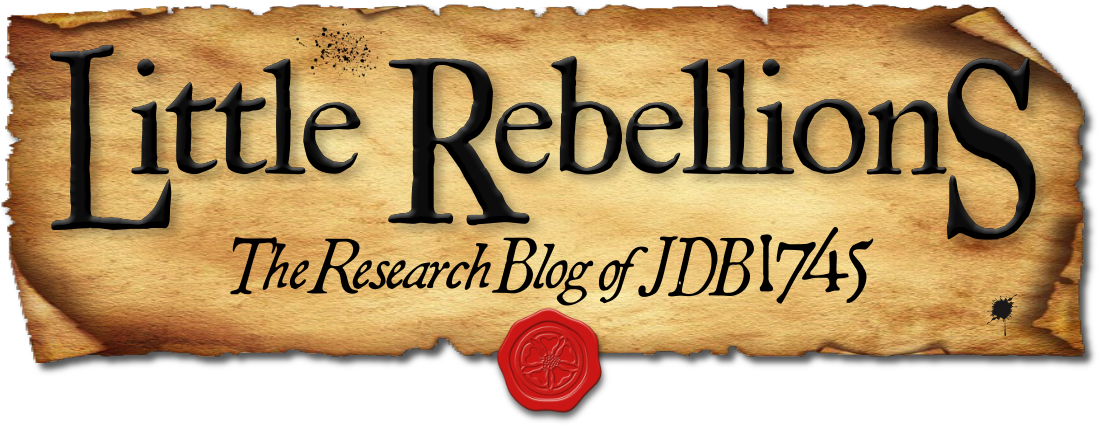Much of the enduring memory and emotion of the final, failed Jacobite challenge blooms from the British government’s retributive and bloody response in the aftermath of Culloden. In what Allan Macinnes calls the ‘exemplary civilizing’ of remote areas of Scotland, a calculated campaign of violent suppression was waged upon recalcitrant communities whether or not they were directly involved in active rebellion.1 Whether tantamount to genocide, as some scholars have argued, the cantonment schemes established in Culloden’s wake and the retaliatory expeditions against communities singled out by government intelligence networks undeniably had a disastrous effect upon ‘Scottish Highland’ culture, though these depredations were not by any means meted out only in the Highlands.
Category: Military (page 4 of 5)
Though it is easy to get lost in the romantic historical record of a conflict like the Jacobite risings, occasionally a document comes to light that viscerally describes the dreadful effects of civil war from a time long past. Jail returns like this one, which registers some of the sick and wounded who were confined in Stirling Castle during the spring of 1746, tell us a number of things about the cost of battle in eighteenth-century Britain – both literally and figuratively. This particular return from the National Library of Scotland lists the names and conditions of twenty-six men held at the castle and treated by the doctor there, and some of the language used to describe the wounds of these men truly brings the past alive in a horrific manner.1
Not all of these prisoners were Jacobite soldiers. Only six on the list are specifically noted as ‘rebels’, though three others are recorded as having been in league with Lord John Drummond’s troops in French service, who came to Scotland in the winter of 1745 to fight in the Jacobite army. A further three individuals are simply described as ‘Highland men’, but the implication is that they were also in prison for treasonable acts. At least two of the men appear to be deserters from British army regiments, and the other dozen are not identified by their crimes. Nonetheless, the grisly conditions recorded about many of these prisoners tell of their adversity.
As Sheilings are only Sheds made in the hills to Herds, for herding Cattle in the Summer time, and not habitable in the Winter; consequently they are of no Importance; therefor it is required they may be destroyed and thrown down by the owners, so as they be no shelter to the Rebels; and that the owners may not plead Ignorance thereafter, and what ever houses have been burnt and destroyed are not to be rebuilt, without a Sign’d Order from the General or Commander in Chief. 1
Within the extensive annals of the Montrose Muniments at the NRS are three bundles of extremely interesting letters and lists that collectively provide a visceral, microcosmic snapshot of the last Jacobite rising in Scotland. After seeking permission directly from the standing duke of Montrose, for the past seven years I’ve been taken with transcribing the contents for inclusion within the database. During that time, the content has also provided some poignant content for my doctoral thesis, numerous lectures, and a forthcoming journal article.
Much of what is contained within these bundles highlights the uncomfortable predicament in which the then 2nd duke found himself: trying to maintain and defend the lives and homes of his contracted tenants – whether Jacobite or not – while upholding his duties and loyalties to the Georgian government of Britain, even through its heavy-handed tactics of rebel-purging after Culloden. In addition to some extremely tense back-and-forth correspondence between Montrose’s estate of Buchanan and the British military authorities based in Fort Augustus, the collection also contains lists of suspected rebels, declarations both for and against accused persons, and records of depredations carried out by King George’s troops throughout Montrose’s lands in the summer of 1746.
© 2025 Little Rebellions
Modified Hemingway theme by Anders Noren — Up ↑







